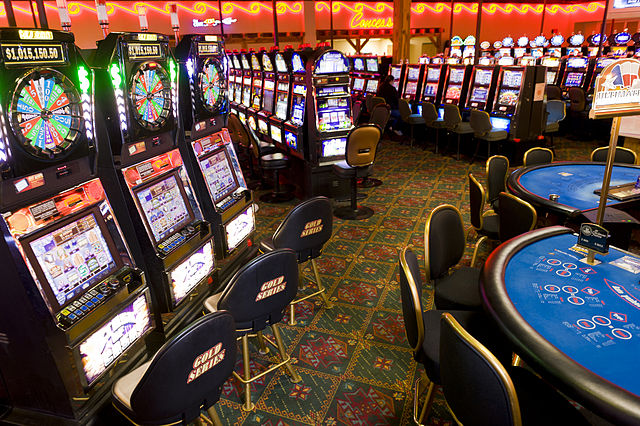How Gambling Games Employ Color and Design to Attract Players
- emergingtechworld.co.uk
- 0
- Posted on

In the dynamic and exciting world of gaming establishments, wherein luck and tactics intertwine, color and design play a critical role in attracting players. From the moment visitors step inside a casino or access a gaming website, they are immersed in a visual feast that captures their attention and lures them to explore further. KUBET Bright colors, engaging graphics, and creative layouts are meticulously crafted to create an environment of thrill and expectation, ultimately enhancing the gaming experience.
While gamblers move through the dynamic landscape of casino games, they come across a range of designs that not only serve aesthetic purposes but also affect emotions and decision-making. Hues like scarlet and yellow symbolize riches and luck, while calm navy and emeralds can create a more tranquil environment. Understanding how these elements work together allows casinos to create an inviting and stimulating atmosphere that encourages players to engage with the games, invest additional time at the tables, and increase their overall enjoyment.
The Science of Color in Gaming Establishments
Color plays a crucial role in the design of casino games, shaping player emotions and behaviors. Lively and striking colors, such as crimson and yellow, are often used to ignite enthusiasm and attract focus. These shades create a feeling pressure and dynamism, encouraging participants to engage more eagerly with the activity. By intentionally selecting hues, developers aim to evoke emotions of satisfaction and expectation, which can enhance the total game experience.
Various colors also have psychological connotations that can influence how participants perceive their chances of success. For example, emerald is commonly associated with fortune and abundance, making it a popular choice in activities like roulette and poker setups. This link can cause players to feel more hopeful and assured in their gameplay, ultimately encouraging them to wager more. Grasping these links allows game designers to create environments that enhance player satisfaction and retention.
Moreover, the layout of gambling game interfaces often utilizes blended colors and differing colors to direct players’ responses. For example, winning combinations may be accentuated with bright, contrasting shades, creating a visual incentive. This approach supports positive outcomes and encourages repeated participation. By utilizing the science of color, casinos can create activities that not only captivate participants but also hold them interested and invested in their play experience.
Design Features that Attract Gamers
The visual appeal of gambling games is primarily influenced by the use of vibrant colors. Bright and contrasting colors are strategically chosen to create an appealing atmosphere that captures interest. For instance, reds and golden hues often signify good fortune and wealth, which is why they are prevalent in the palettes of gaming machines and table surfaces. These colors not only draw players in, but they also stir emotions associated with excitement and anticipation, enhancing the overall gaming experience.
In addition to color, the aesthetic and layout of gambling games play a significant role in player attraction. Games are designed to be intuitive, ensuring that players can easily understand the guidelines and mechanics. User-friendly interfaces, along with engaging graphics and animations, help maintain gamer interest and promote extended play sessions. The tactile elements, such as the texture of the buttons and the audio of the games, also contribute to a comprehensive sensory experience that keeps players immersed.
In conclusion, conceptual elements in gaming design can significantly influence player choice. Many casino games are inspired by popular culture, myths, or exploration motifs, featuring symbols and characters that connect with players. These themes create a sense of engagement and relatability, making each game feel distinct. When players feel a connection to the theme, they are more likely to opt for that game over others, leading to increased participation and enthusiasm within the casino environment.
Case Studies: Successful Gambling Table Game Designs
One key example of impressive gambling game design is the well-known slot machine series themed around popular movies. Games such as those based on the Wizard of Oz and Game of thrones utilize bright colors and top-notch graphics to immerse players in familiar narratives. The employment of lively visuals and captivating sound effects takes the focus of players, building an emotional connection to the theme. This tactic not only encourages longer play but also boosts the overall gaming experience, yielding increased player retention.
Another notable case is the use of color psychology in table games like 21 and roulette. Casinos often create these games with dark reds and greens, colors traditionally connected with luck and wealth. For instance, the green felt on a 21 table provides a relaxing effect, while the crimson accents in the wheel invite excitement. This intentional use of color helps to create an inviting atmosphere that encourages players to engage, satisfying their psychological impulses and boosting their enjoyment.
Finally, online casino games that include community features and bright, lively designs have seen remarkable success in engaging players. Games like Zynga’s Poker and Slot-O-Mania leverage vivid colors and playful animations to forge an inviting online environment. The addition of leaderboards, community sharing options, and in-app rewards fosters competition and community, drawing players in for longer sessions. Such designs not only make the games visually attractive but also emphasize community engagement, a crucial factor in player retention and engagement within digital casino environments.